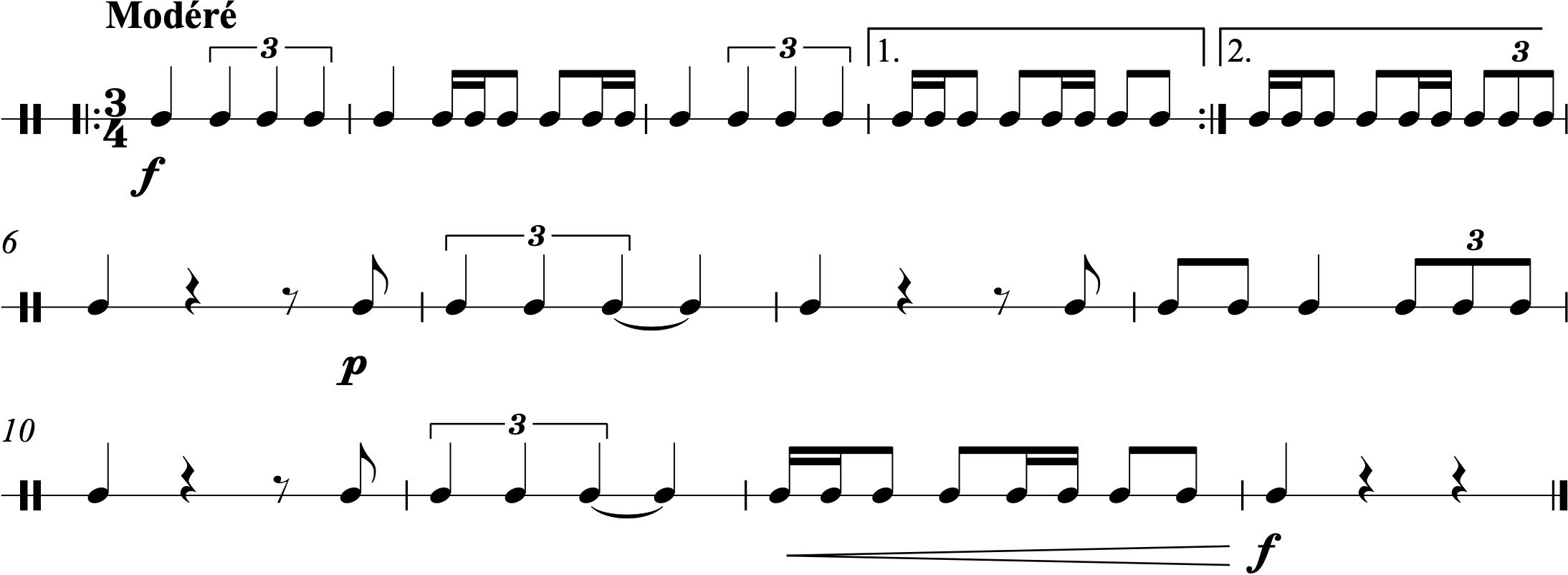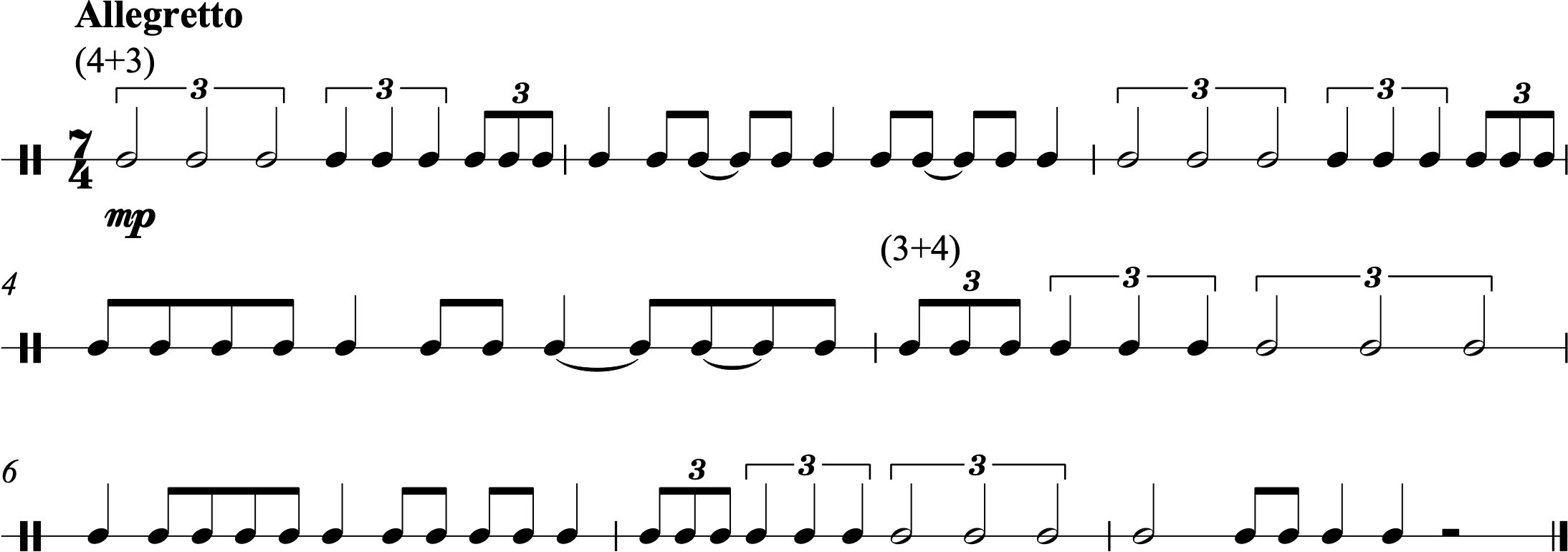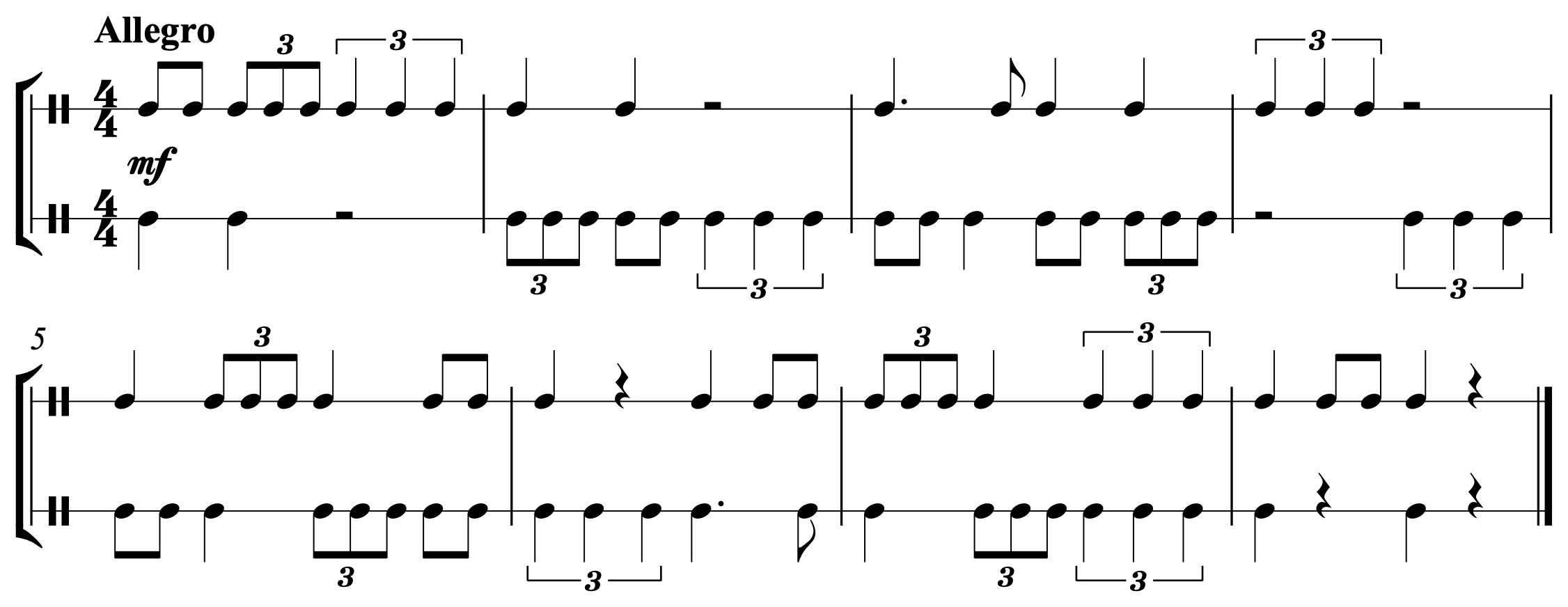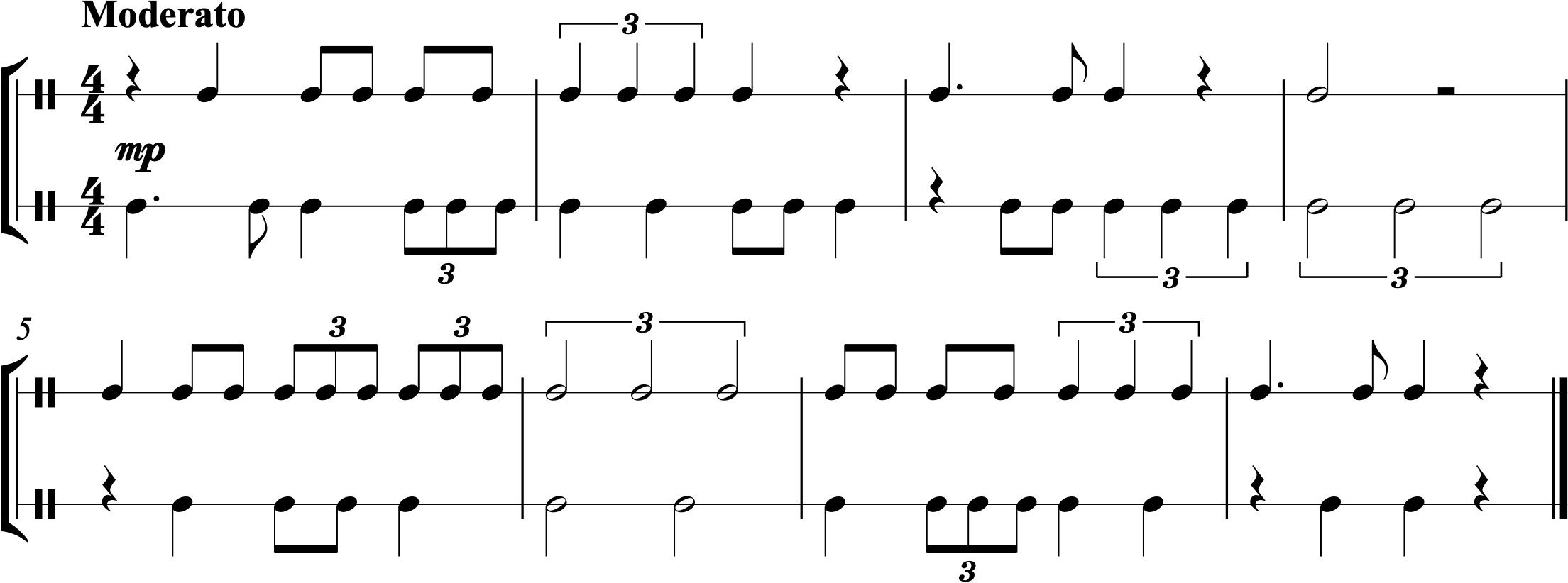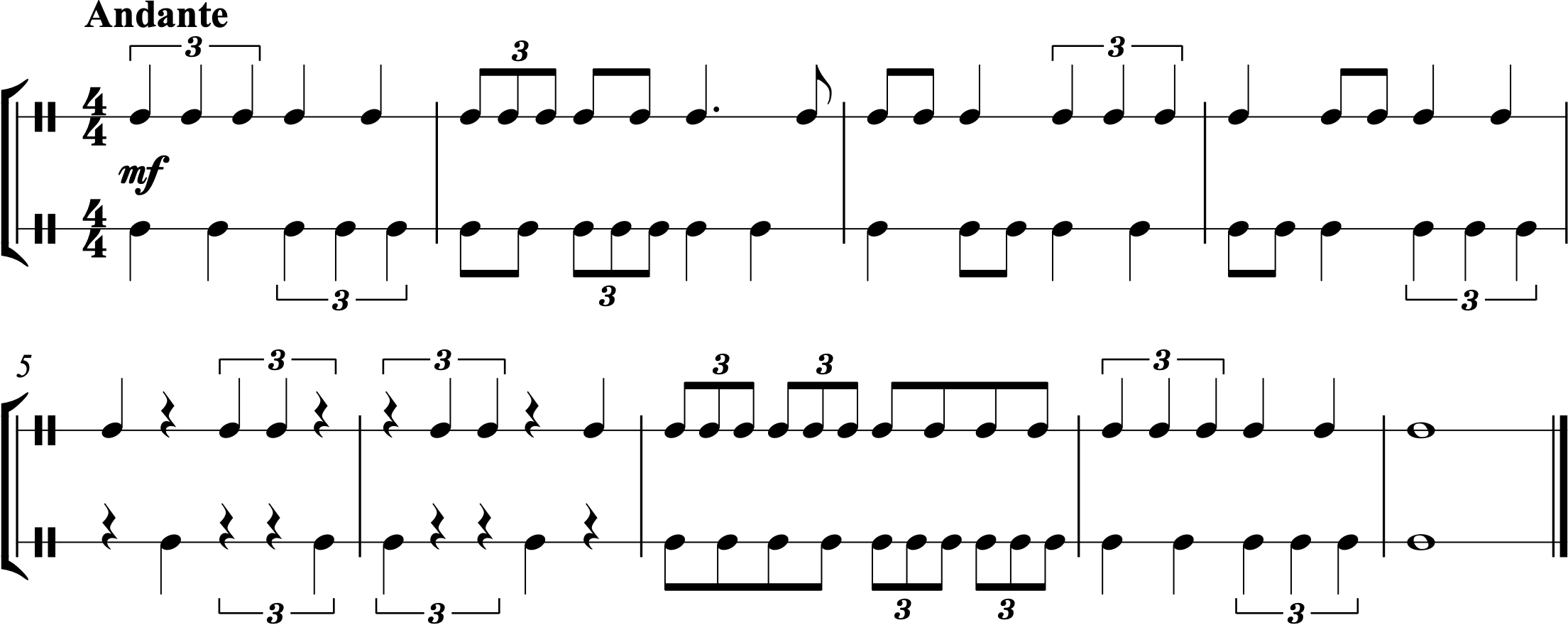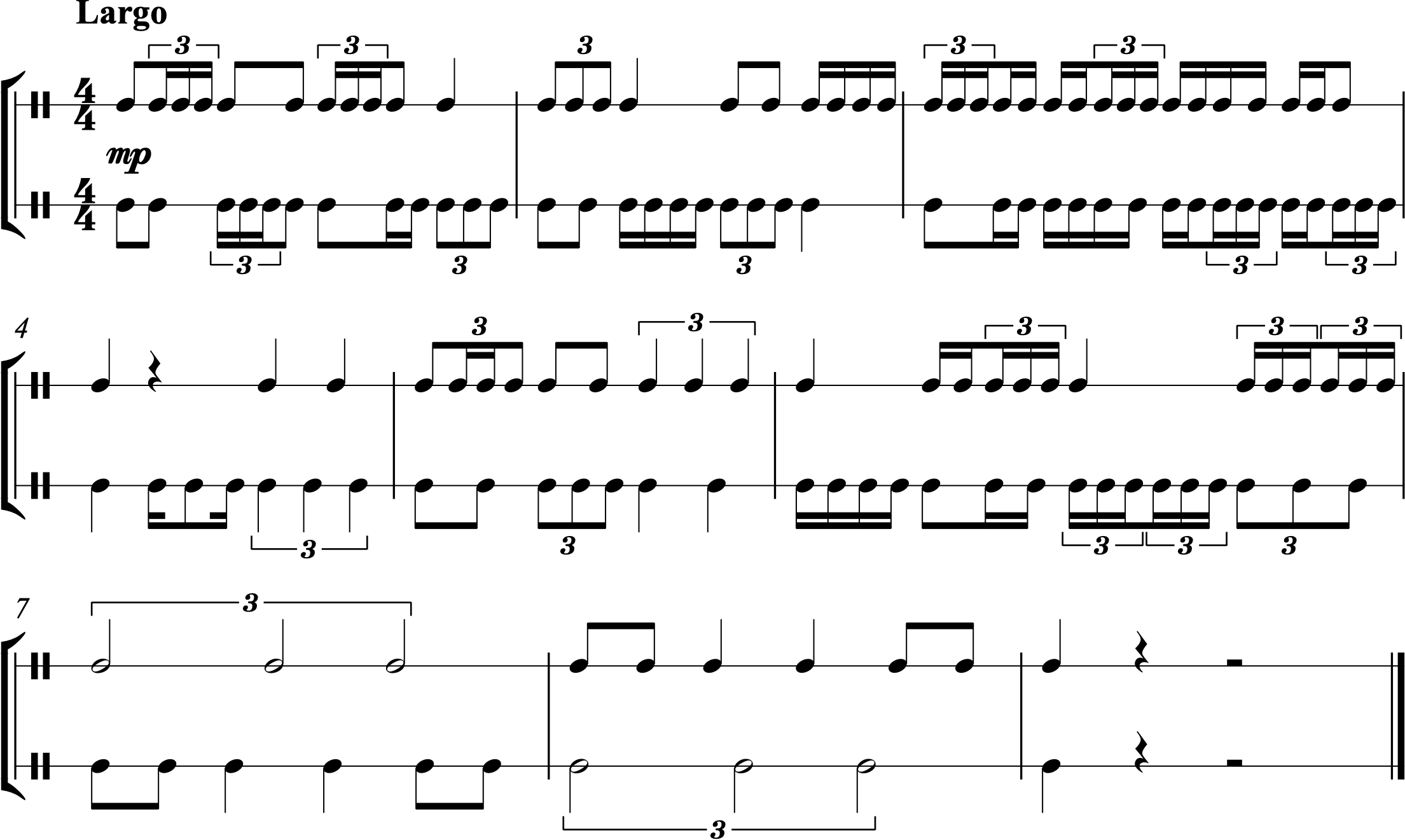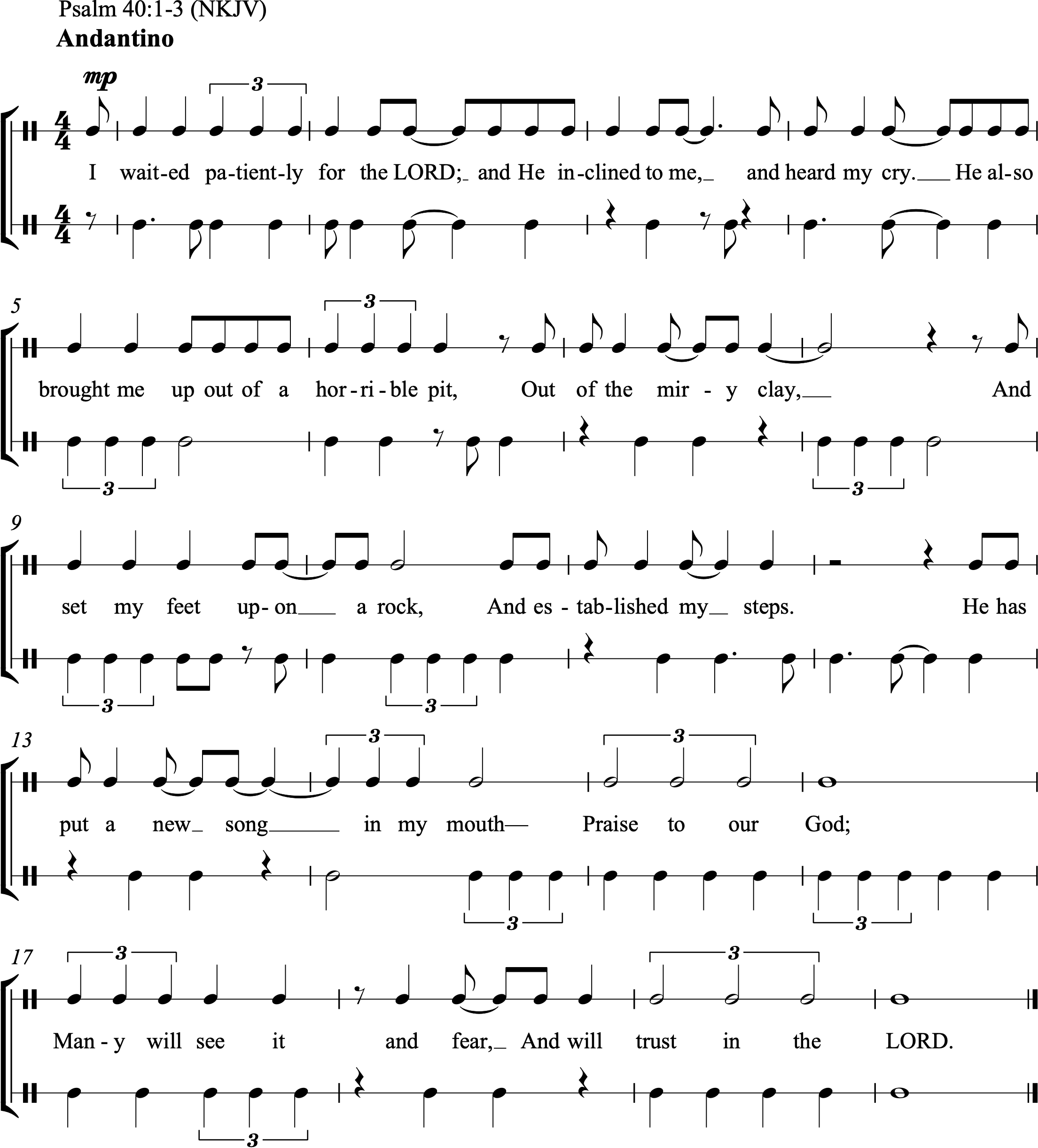Chapter 19: Simple Meter—quarter-note triplets and half-note triplets
About This Chapter
About This Chapter: In Chapter 10, we explored triplets—irregular divisions of the beat into three equal parts in simple meters. In this chapter, we’ll see that we can divide larger spans into three equal parts as well.
Let’s start by looking at quarter-note triplets. A set of quarter-note triplets divides two beats into three equal parts. A helpful way to conceptualize this is to think about the eighth-note triplet pulse. The example below shows us one way to build up to quarter-note triplets. Measure 1 features normal eighth-note triplets. Measure 2 accents every other note of the triplets. Those accented notes are the ones that will appear in the quarter-note triplet. In measure 3, notes are tied together in pairs. Finally, measure 4 presents the quarter-note triplet.
While the syllables we use for the quarter-note triplets when building up from eighth-note triplets are “1 li la,” there is another possibility, shown in parentheses in the second row of syllables in measure 4 of the figure above. You can shift to thinking of the half note as the pulse, then divide that span into three equal parts, creating a triplet at a higher metrical level. In this case, you might consider using the familiar triplet syllables: “1 la li.”
It’s important to think about the triplet division so that you can place the quarter-note triplets precisely where they’re intended to be. You might sometimes hear what are supposed to be quarter-note triplets performed like the rhythm in measure 2 in the figure below. While these attacks do divide the two-beat measure into three parts, they are not evenly spaced! Instead, they need to be spaced evenly like in measure 1.
Half-note triplets divide four beats into three equal parts. To build up to them, we can go through a similar process to what we did for quarter-note triplets. In measure 1 of the figure below, a measure of 4/4 is divided into eighth-note triplets. In measure 2, every fourth note is accented. These are the notes that will become the half-note triplets in measure 3.
Alternately, we could build up to half-note triplets using quarter-note triplets, as in the figure below. Measure 1 shows two sets of quarter-note triplets. In measure 2, every other quarter-note triplet is accented. These are the notes that will become the half-note triplets in measure 3.
Section A—Introduction to quarter-note triplets
Practice
Practice A:
 Practice by performing along with this audio file, which features a metronome click and the notated rhythm. You will hear one measure of wood block to establish the tempo before the exercise begins.
Practice by performing along with this audio file, which features a metronome click and the notated rhythm. You will hear one measure of wood block to establish the tempo before the exercise begins.
Next, try performing along with this audio file, which features the notated rhythm but no metronome click. You will hear one measure of wood block to establish the tempo before the exercise begins.
1.
2.
3.
4.
5.
6.
7.
8.
9.
10.
11.
12.
13.
14.
15.
16.
Section B—Introduction to half-note triplets
Practice
Practice B:
 Practice by performing along with this audio file, which features a metronome click and the notated rhythm. You will hear one measure of wood block to establish the tempo before the exercise begins.
Practice by performing along with this audio file, which features a metronome click and the notated rhythm. You will hear one measure of wood block to establish the tempo before the exercise begins.
Next, try performing along with this audio file, which features the notated rhythm but no metronome click. You will hear one measure of wood block to establish the tempo before the exercise begins.
17.
18.
19.
20.
21.
22.
23.
Section C—Two-part rhythms featuring quarter-note triplets and half-note triplets
24.
25.
26.
27.
28.
29.
30.




















